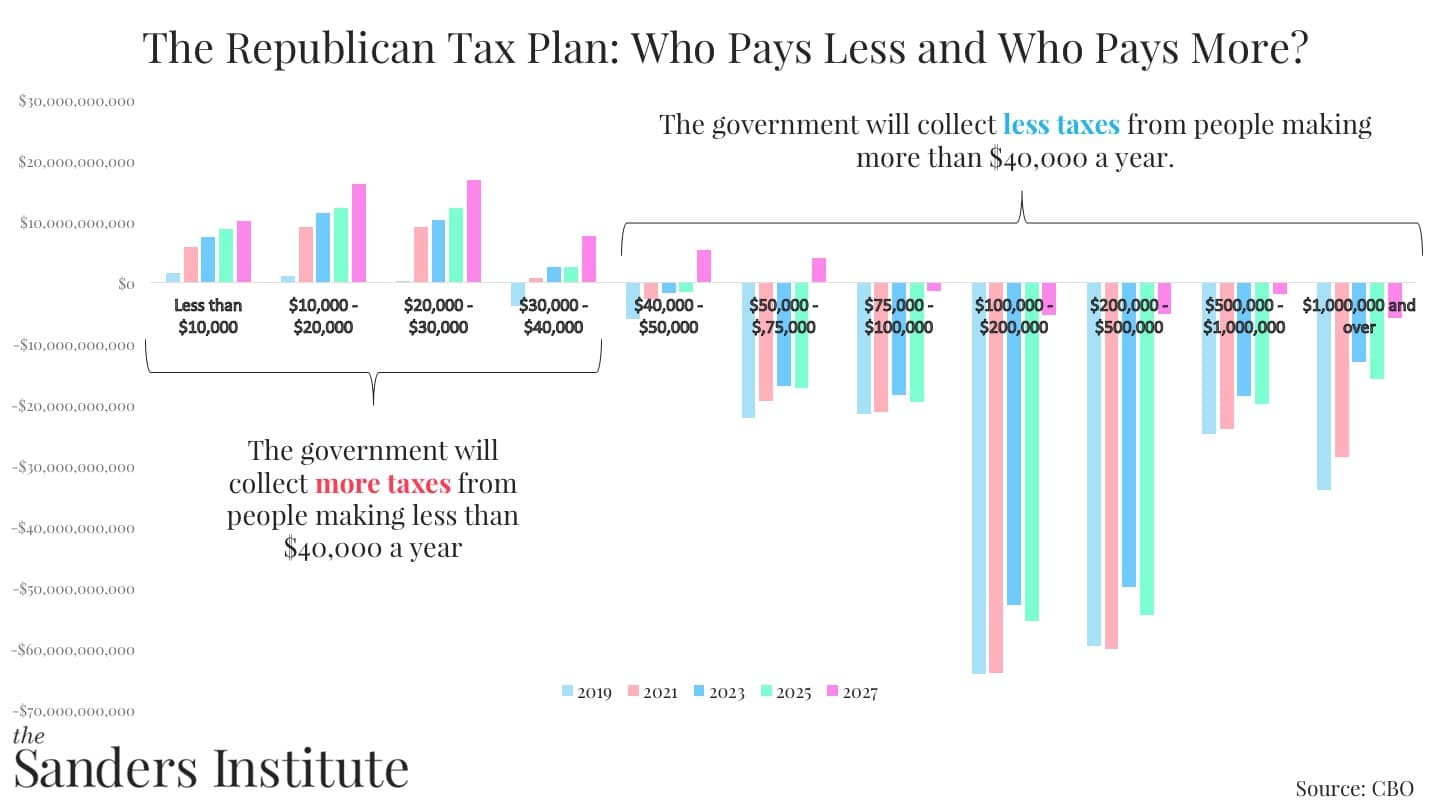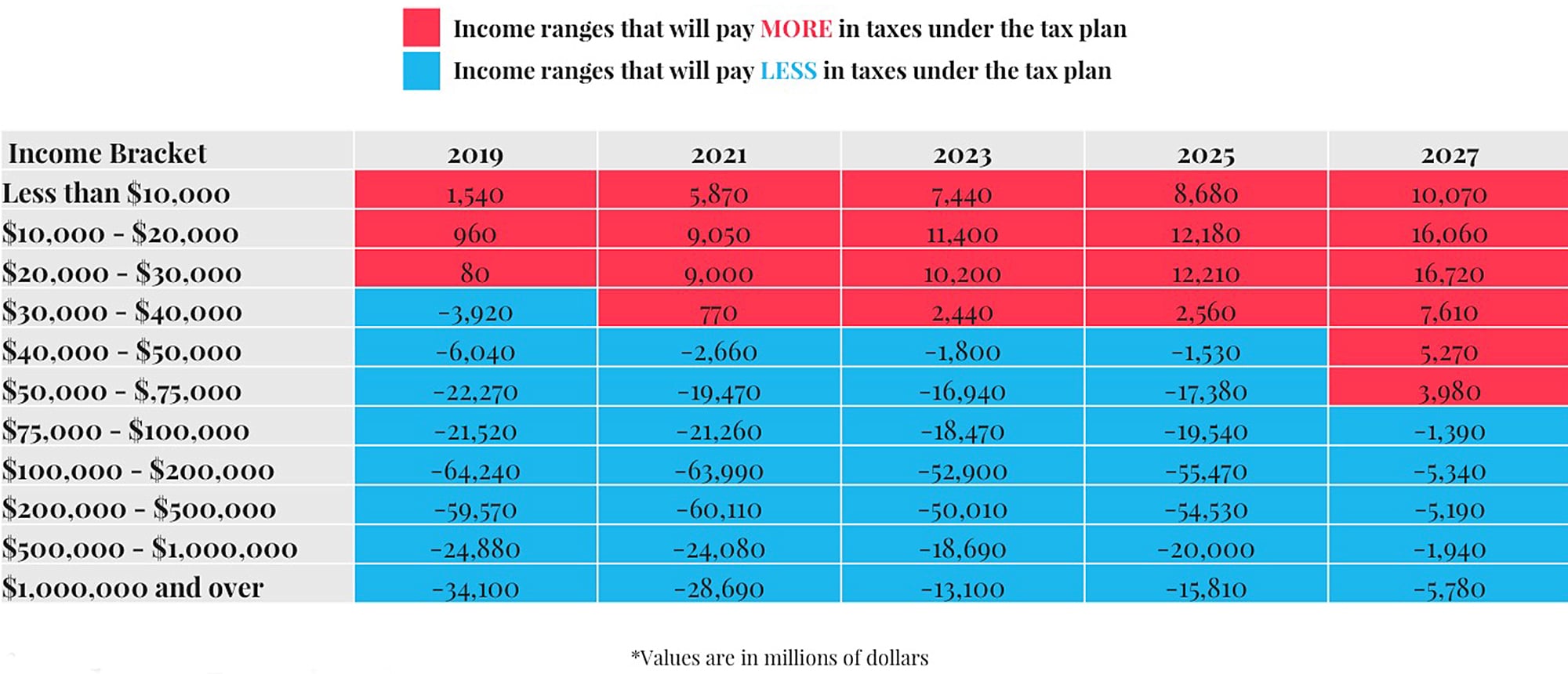The GOP Tax Plan: Who Pays More?
The media is currently filled with analyses, reports, and opinions about the GOP tax plan. With a lot of information out there, it is important to understand the key points. Education is the first step towards making a difference.
So what do you need to know about the tax plan?
It is a regressive plan. This means that it is better for the rich, and worse for the poor. You can clearly see this in a chart put together by the Congressional Budget Office. They list out, in millions, the net changes in federal revenues by income category and by year. Each cell represents how much revenue the federal government will gain or lose from that income category in that year.
For instance, Americans making $35,000 a year will pay 3,920,000,000 less to the government in 2019 but will pay 7,610,000,000 more to the government in 2027.
We have taken a portion of that chart and color coded it. The red cells represent that the federal government will receive more money from that income category in the form of taxes, the blue cells represent that the federal government will receive less from that income category.

Lower income categories will clearly pay more to the government while higher income categories will pay less. Below is a visual representation of this data.

This tax plan, however, does not approach the issue solely through income categories. It makes a number of changes to the tax code that influence some people and not others (e.g. whether they have children, whether they would have to pay the Estate Tax.)
Therefore, the overarching amount of revenue gathered by the federal government doesn’t show the full picture of the chances of an individual in that income bracket receiving a tax cut or a tax increase. The graph below shows the percent of each quintile of the population (The population is split into 5th based on income) that would receive a tax cut and the percent that would receive a tax increase.
Like the previous graph, the regressive nature of the tax plan is clear. The top quintile is the only quintile where a greater percentage will receive tax cuts than tax increases. Just over half (53%) of the top quintile will see tax cuts, while 45.7% will see tax increases.
Breaking this down even further: the top 1% and 0.1% in particular will receive the most tax cuts with 83% and 98.1% respectively receiving tax cuts.

This analysis is by no means exhaustive, but we hope that it will give you a better sense of the regressive nature of the GOP tax plan.

